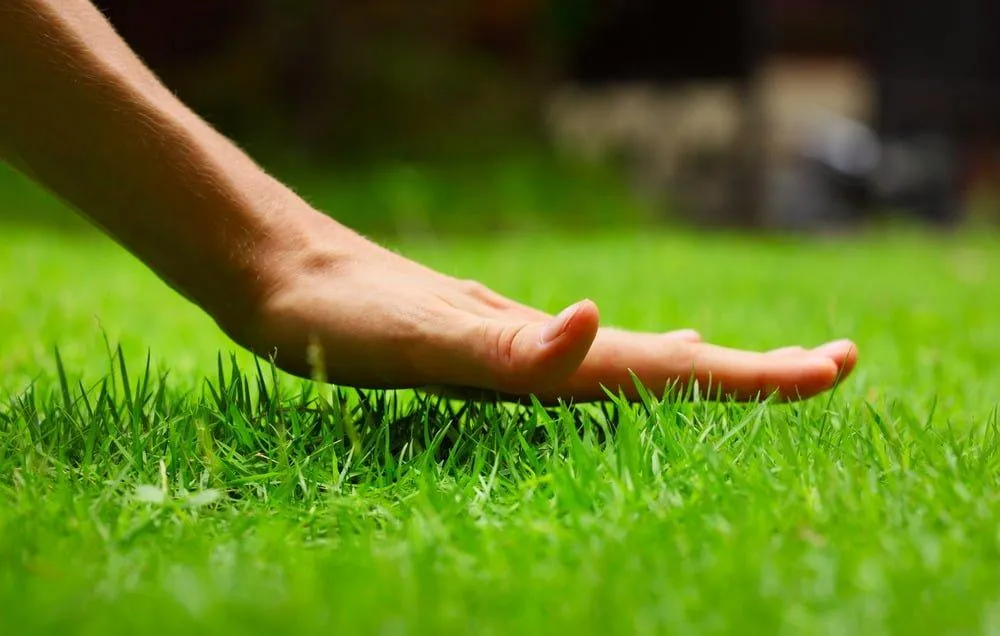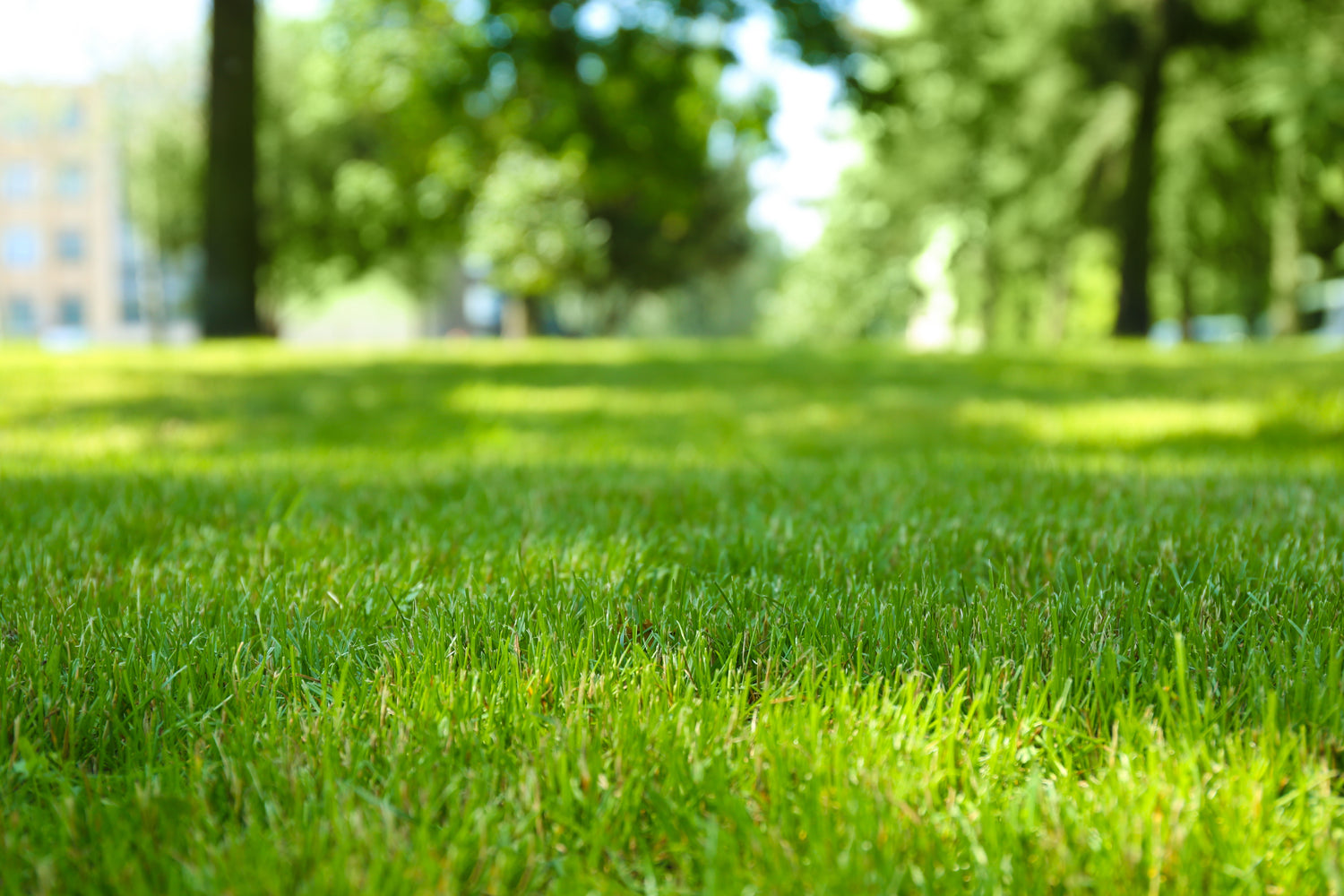[vc_row][vc_column][vc_column_text]A lush and healthy lawn is the pride of any homeowner. Achieving that vibrant, green grass carpet requires consistent care throughout the year. Each season presents unique challenges and opportunities for lawn maintenance. This comprehensive guide will cover essential tips and best practices for maintaining a healthy lawn throughout the year, focusing on mowing, watering, fertilising, and weed control.
Spring Lawn Care
1. Raking and Cleaning
Spring is the time to clear away any debris, fallen leaves, or branches accumulated over the winter. Raking your lawn helps to promote better air circulation and prevent the growth of fungal diseases.
2. Mowing
Start mowing your lawn once it reaches a height of about 3 inches. Never cut over one-third of the grass blade in a single mowing session to avoid stressing the grass. Keep your mower blades sharp for clean cuts.
3. Aeration
Consider aerating your lawn in early spring to relieve soil compaction and improve water and nutrient absorption. This allows the grassroots to breathe and promotes healthier growth.
4. Seeding and Overseeding
Fill in bare patches and rejuvenate your lawn by overseeding with appropriate grass seed. Choose a high-quality seed blend that suits your lawn’s conditions and climate.
5. Fertilising
Apply a slow-release, balanced fertiliser in spring to provide essential nutrients to the grass as it starts its active growth.
6. Weed Control
Spring is the ideal time to tackle early weeds. Use pre-emergent herbicides to prevent weed seeds from germinating and establish a weed control plan for the season.
Summer Lawn Care
1. Watering
Proper watering is crucial during the hot summer months. Water deeply and infrequently, preferably in the early morning or late afternoon, to reduce water evaporation.
2. Mowing
Keep your lawn mower in a higher setting during summer to shade the soil and protect the grass from heat stress. Longer grass also helps retain moisture.
3. Managing Foot Traffic
Limit foot traffic on your lawn during hot and dry periods to prevent unnecessary stress on the grass.
4. Fertilising
Avoid fertilising in the peak of summer. Use a slow-release fertiliser to prevent grass burning if your lawn requires additional nutrients.
5. Dealing with Pests
Monitor your lawn for signs of pests and take appropriate measures to control them. Chinch bugs, grubs, and lawn-damaging insects are more active during the summer.
6. Providing Shade
Consider providing temporary shade to vulnerable lawn areas using umbrellas or shade cloths to prevent sunburn and maintain moisture.
Fall Lawn Care
1. Raking and Cleaning
Similar to spring, fall requires raking to remove fallen leaves and debris. Too many leaves on the lawn can suffocate the grass and promote disease.
2. Aeration
Fall is an excellent time for core aeration, allowing for better nutrient absorption and root development before winter.
3. Seeding and Overseeding
Overseed any thin or bare spots in the lawn to encourage new grass growth and ensure a dense lawn in the coming year.
4. Fertilising
Apply a fall-specific fertiliser with higher potassium content to strengthen the grass’s roots and promote winter hardiness.
5. Weed Control
Fall is another critical time for weed control. Apply post-emergent herbicides to tackle persistent weeds before they go dormant for the winter.
Winter Lawn Care
1. Avoid Traffic
Avoid walking on frozen or frost-covered grass, as it can cause damage to the grass blades.
2. Snow Removal
Keep your lawn clear of heavy snow and debris to prevent matting and disease development.
3. Minimal Lawn Maintenance
During the winter months, the lawn is mostly dormant. Minimal maintenance is required, allowing you to prepare for the upcoming spring season.
General Tips:
1. Regular Maintenance:
Consistent care is the key to a lush green lawn. Stick to a routine and adapt your lawn care practices to seasonal needs.
2. Proper Irrigation:
Water deeply but infrequently to encourage profound root growth. Adjust watering schedules based on rainfall and temperature changes.
3. Soil Testing:
Periodically test your soil to identify deficiencies and tailor your fertilisation program accordingly.
4. Sharp Mower Blades:
Regularly sharpen your mower blades to ensure clean cuts and prevent damage to the grass.
5. Environmentally Friendly Practices:
Consider using organic and eco-friendly lawn care products to minimise environmental impact.
By following these seasonal lawn care tips, you can maintain a beautiful and healthy lawn throughout the year. Remember that each lawn is unique, so pay attention to its specific needs and adjust your care accordingly. With proper maintenance, you’ll enjoy a vibrant, lush green lawn that enhances your home’s and outdoor space’s beauty.
[/vc_column_text][/vc_column][/vc_row]






